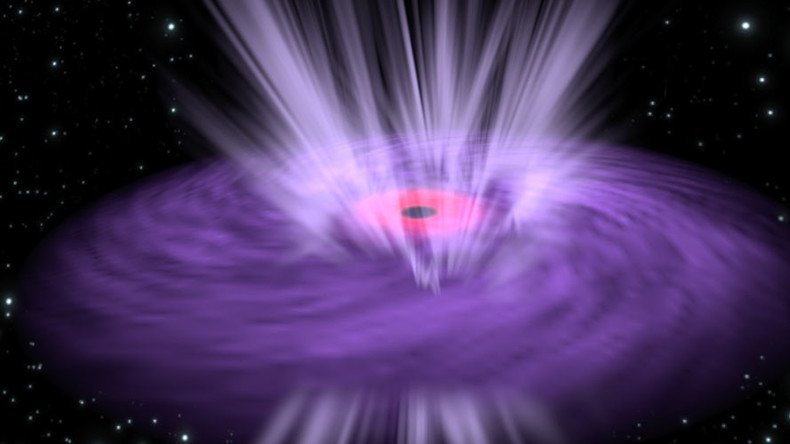‘Burping’ black holes: ‘Ultrafast’ winds & radiation could change galaxies, study finds

Astronomers have observed rapidly varying temperatures in gas outflows ‘burped’ out by a black hole for the first time. The expelled material could influence the growth of the black hole’s host galaxy, according to NASA.
Black holes are known for feasting on stars and gases nearby before belching the material out in the form of “ultrafast winds.”
An international team of researchers managed to measure rapidly varying temperatures in hot gas emanating from around a black hole in the Centaurus constellation using NASA’s NuSTAR telescope.
Hot! For the first time, @NASANuSTAR spots temperature swings in hot gas emanating from around a #blackholehttps://t.co/QL0nct2PGepic.twitter.com/ojCDycIq41
— NASA JPL (@NASAJPL) March 1, 2017
The team studied X-rays coming from the edge of the black hole to measure the wind temperatures and found that the winds can heat up and cool down within just a few hours.
"We know that supermassive black holes affect the environment of their host galaxies, and powerful winds arising from near the black hole may be one means for them to do so," said NuSTAR Principal Investigator and CalTech professor Fiona Harrison.
"The rapid variability, observed for the first time, is providing clues as to how these winds form and how much energy they may carry out into the galaxy."
The team concluded that the black hole’s radiation was actually heating up the winds’ temperatures up to millions of degrees Fahrenheit, making them incapable of absorbing any more X-rays. Once the winds cooled off, the absorption features returned and the cycle started again, the team remarked in a statement.
Astronomers spot vagrant black hole behind supersonic space cloud speeding through the Milky Way ‘like a bullet’ https://t.co/qdTMkUbKifpic.twitter.com/QGKoVF2L48
— RT (@RT_com) February 5, 2017
"This is the first time we have seen that winds are interacting with the black hole's radiation," said Michael Parker, postdoctoral scholar at University of Cambridge Institute of Astronomy and first author on the paper, which is published in Nature.
The team said the rapid variability in the winds and the quick change in its timescales suggests that the emission is coming from very close to the black hole. However, more research is needed to better understand the outflow’s composition of gases as well as how these winds are connected to galaxy formation.
READ MORE: ‘Cosmic spitball’: Black hole spews shredded star across galaxy












